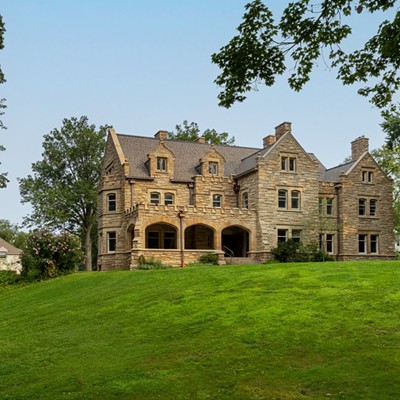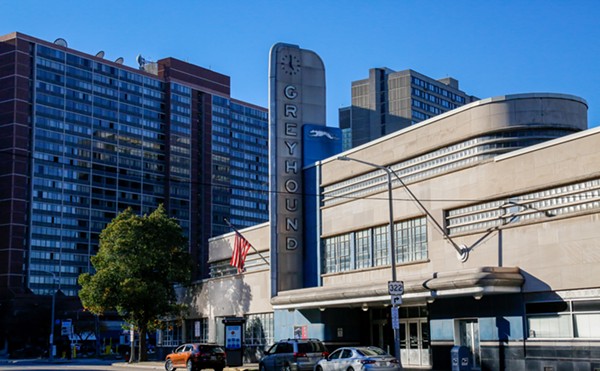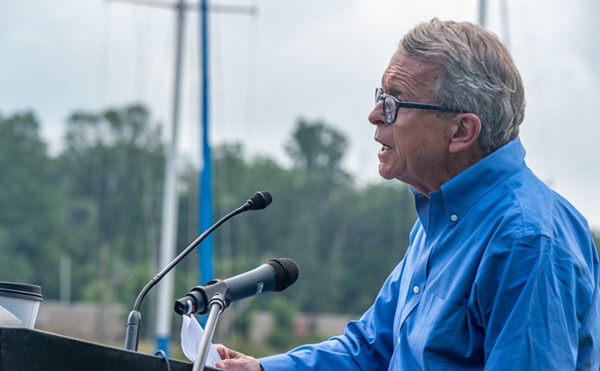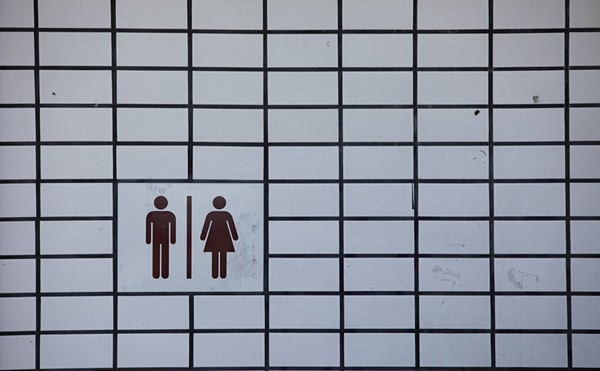The Recent headlines have been gruesome and frequent, both nationally and locally, and domestic violence and child abuse has been front and center in the nation's daily conversations. October is National Domestic Violence Awareness Month, and with two decades at the Domestic Violence and Child Advocacy Center, the last six as its CEO, Linda Johanek has much to say about what her organization has done, where Northeast Ohio has struggled to address those issues, where collaboration and awareness have made significant changes, and what the public doesn't know about domestic violence and child abuse.
Vince Grzegorek: Tell me and the readers a bit more about the center and what you folks do.
Linda Johanek: We serve a range of issues. We deal with child abuse, partner violence and even elder abuse when it's domestic in nature. We provide short- and long-term services, we do prevention, we have educators in the schools teaching teens about violence and child abuse, we have inmate services connected to the court system, we have trauma counseling, we have a Latino project, we have programming for the African-American population. We also just finished an expansion for a safe place for children to visit noncustodial parents, we have a 24-hour help line that fields 15,000 calls a year, and that's just in Cuyahoga County. We operate a safe, confidentially located shelter, which is important for people who are in immediate danger. We work with emergency rooms and police to bring people in because it's important for them to have a confidential location because those who abuse are very obsessed with their victims and try to find them. It's just another way to help families feel safe.
VG: That's a ton, and a ton more than I think people know is available. Between the NFL and Ray Rice and Adrien Peterson on a national scale, and locally with a string of domestic violence-related homicides and very troubling story lines, I can't imagine a time when domestic violence and child abuse has been more front and center on a national or local level. How do those headlines affect your organization?
LJ: Absolutely when it comes to the NFL and the Ray Rice story, what was amazing is that when you have a high-profile situation like that, it did spark a national conversation and it was a very large national conversation involving many people from many walks of life that we hadn't had before. That might have been the largest conversation on the issue that we've ever had. When it comes to headlines, our help line calls do go up. In September, when the NFL story hit, we saw our help line calls go up 20 percent and speaking requests go up over 400 percent. People are listening, awareness is being raised, and victims tend to reach out more and the general public tends to want to learn more.
VG: And the same goes for very tragic local headlines?
LJ: When there are local tragedies, and we've had three domestic violence-related homicides in the past month and a lot of ongoing assault and child abuse cases too, because we're on the news and it gets more attention and the help line is advertised, the calls go up.
VG: Let's put this in very specific terms. Share some facts and stats that go right to the heart of how prevalent domestic violence and child abuse are, because I think that while there is more awareness, people aren't aware of how much it goes on.
LJ: I think there are several key things. I think the general public doesn't realize how pervasive a problem it is, and not just domestic violence but also child abuse. One day, I hope our organization and the mission can do for domestic violence what Susan B. Komen did for breast cancer. We're all familiar with health issues like breast cancer, which affects one in eight women. People don't realize that domestic violence is one in four. And then you look at child abuse, and one in three girls and one in six boys will be sexually molested before they turn 16.
VG: Like I said, I don't think people grasp those numbers.
LJ: It's incredible. When people hear those stats, they're shocked. But people don't talk about it; it's still behind closed doors, there's still a lot of shame. When you learn the facts, people can act. You can teach young boys and girls what a healthy relationship looks like versus an unhealthy one. You have people passing on our help line number to friends or family. I think the other thing related to domestic violence is that we tend to blame the victim. We spend a lot of time asking what's wrong with the woman. Why would she stay? What's wrong with her? I get why people ask the question — domestic violence is hard to understand, it's a complicated issue — but when it comes to victim blaming, that's the problem. Even with Ray Rice, people were going after Janay Rice and saying, 'Look at her, she stayed with him. She married him!' People don't understand that the No. 1 reason women stay is out of fear, because the abuser has threated them, or said he will kill the children or hurt the family. And offenders often follow through on their threats. Staying is a way to protect themselves and the children and those they love. People going after Janay Rice saying she's a gold digger, that's so wrong. I think if we can understand more how difficult it is, understand that domestic violence is a complicated issue, that there's a psychological trauma involved and that offenders are good masters of manipulation, the better we'll do. As a society, we need to focus more on how we prevent it and how we hold offenders more accountable.
VG: How can we get better? Looking specifically at those local stories, there were protection orders and long histories of abuse and threats, and what felt like gaps in the system that left these women vulnerable.
LJ: We have been looking at these last few homicides and asking what happened. What are the gaps in the system? Quite frankly, there's a lot of things that we can do to close those gaps and get tougher on offenders and their sentences.
VG: Like what?
LJ: Here are some facts about protection orders. Research shows 75 percent of women with a protection order report that the violence then stops or decreases. That's a large majority of cases, but the problem is 25 percent is still a large number. There are several good things that have come out of the conversations recently and one of those is in Judge Russo's court, and these are things we were talking about last week. There will now be a domestic violence advocate to work with victims. That's a big piece. Victims don't always trust the system or might have had a bad experience before, but they trust advocates and advocates get information that the court and the police don't get. It's important to have the advocates work closely with the system because maybe they learn of a history that wasn't on the books, or hospital records the court wasn't aware of. Not everyone realizes this, but a no-contact order isn't the same thing as a protection order. When an offender violates a protection order, you can arrest them. That's not the case with a no-contact order. Not only can police arrest them, but it can escalate penalties. We need to strengthen penalties against offenders.
VG: Where do we stand now, some 20 years into your tenure with the organization?
LJ: The reason I keep doing this is because we make progress. National research says that we've cut domestic violence by 50 percent in the last 20 or 30 years. That's extraordinary. There are more and more people coming forward, but the good news is that the more we talk about it and the more victims that come forward, the more services they can have access to.
VG: What's the help line number and how can people with issues get in touch?
LJ: Our help line number is 216-396-HELP (4537). And I want to add: Families and friends play a big role in domestic violence and child abuse reporting and awareness. It's important to always keep a line of communication open.












